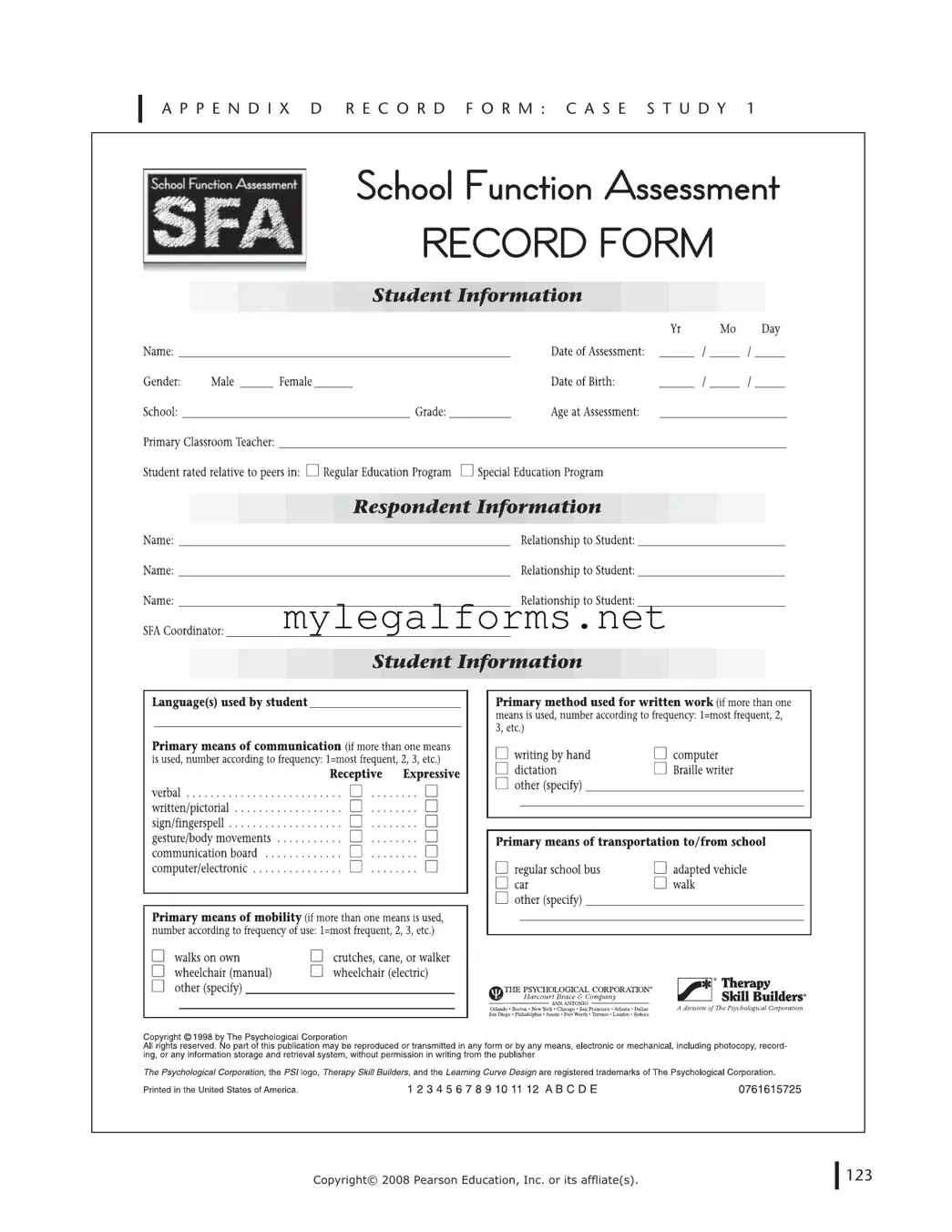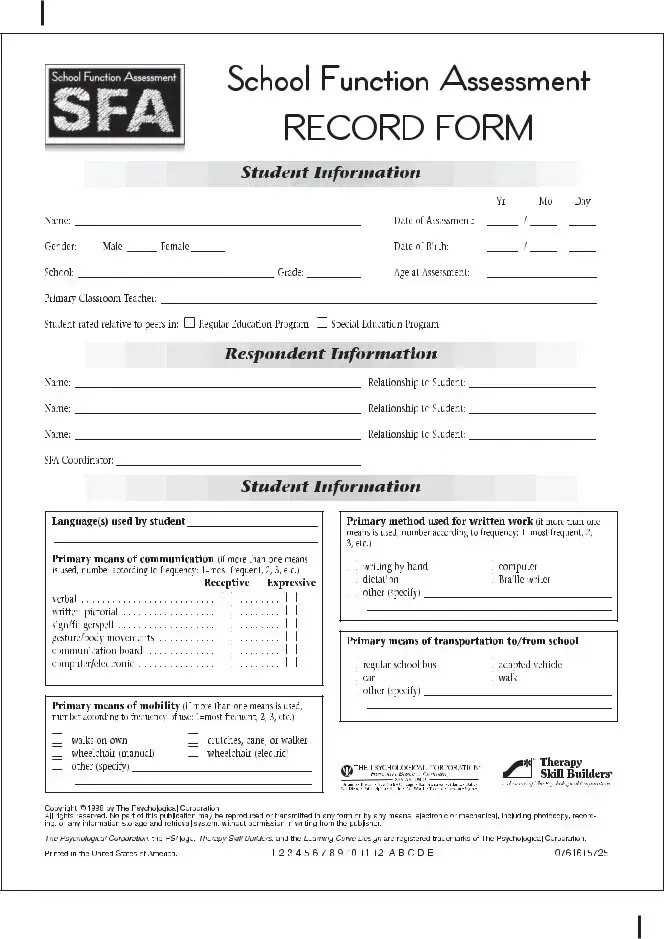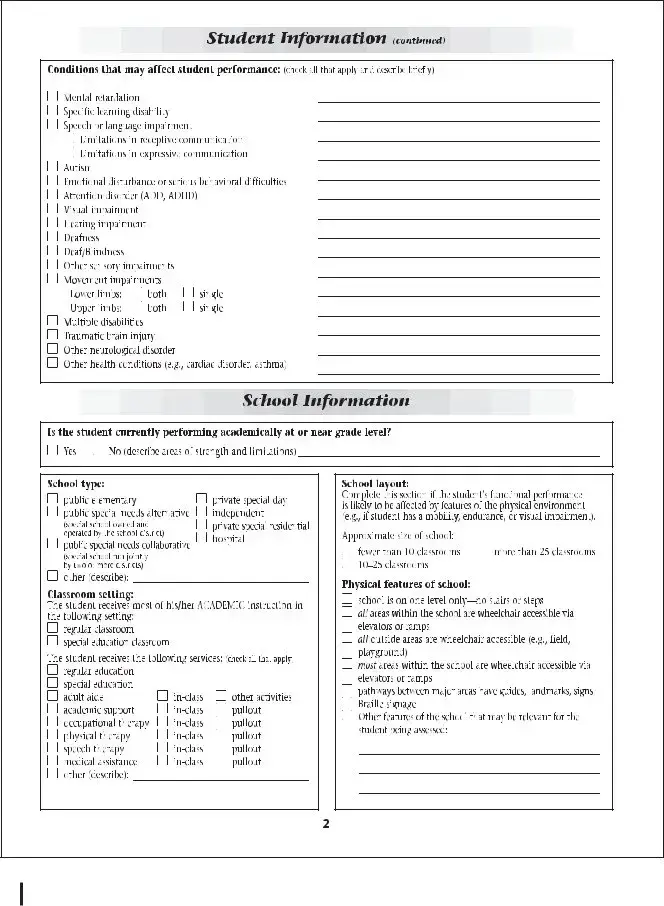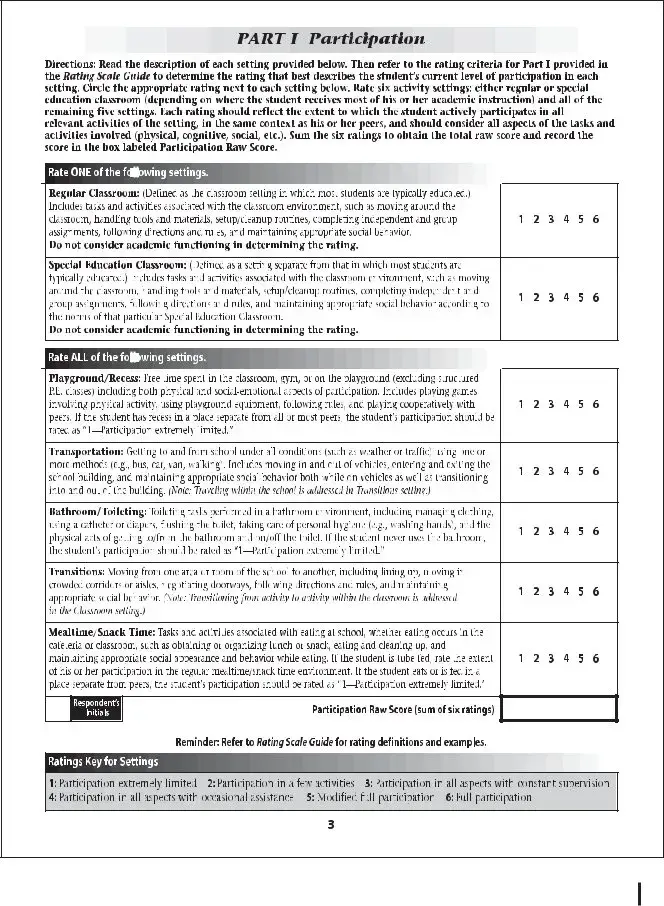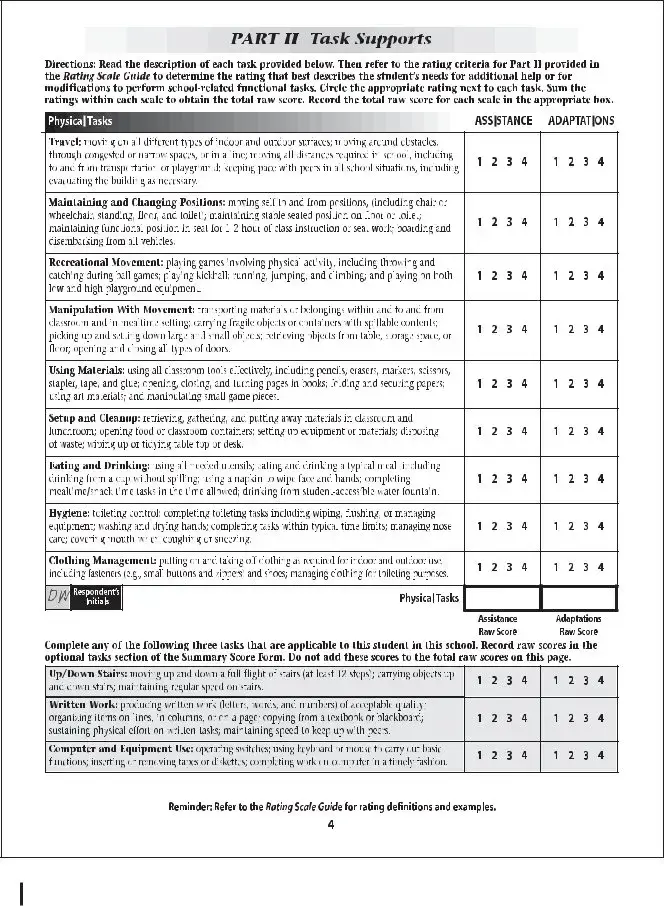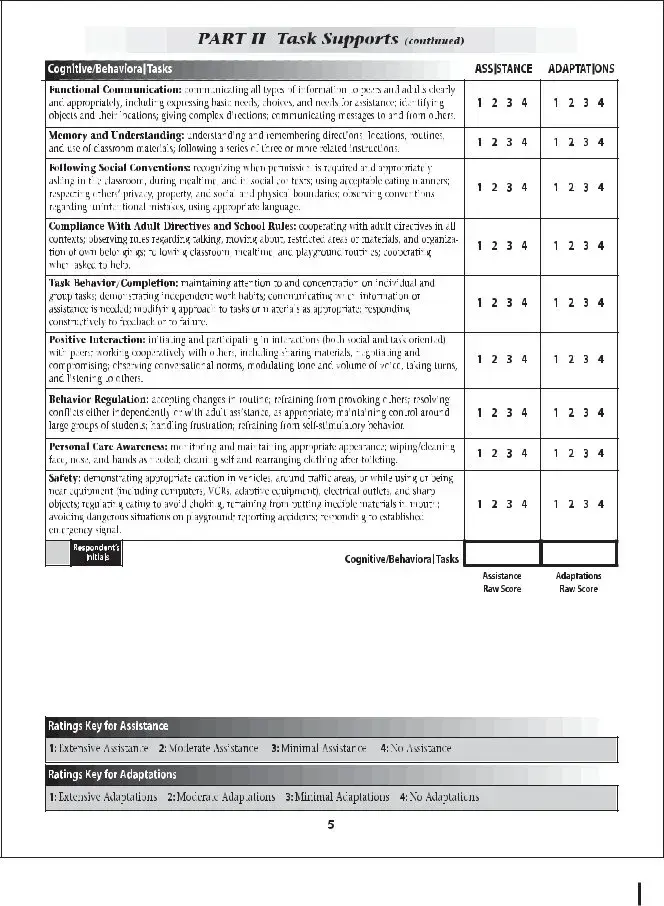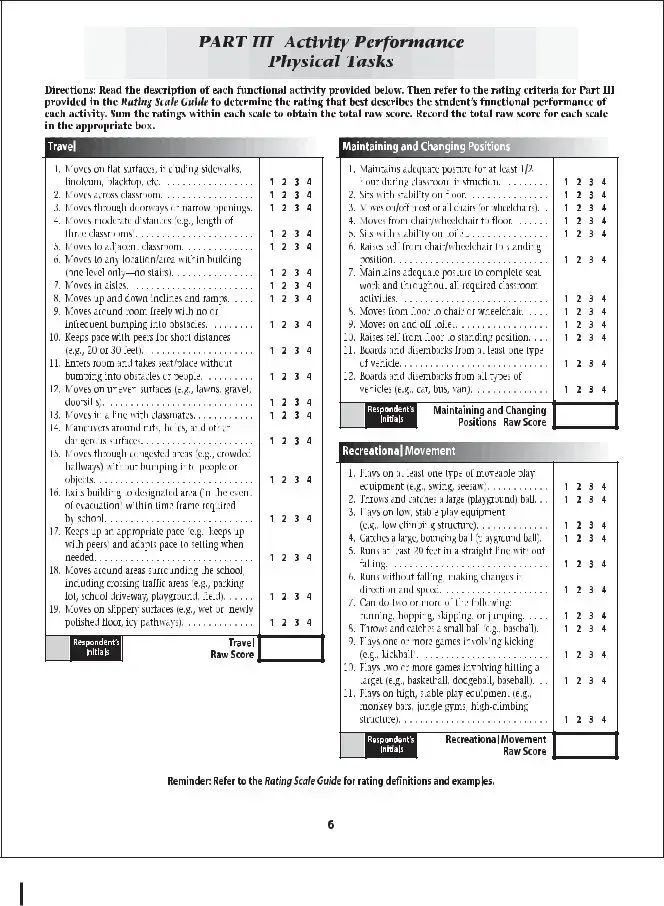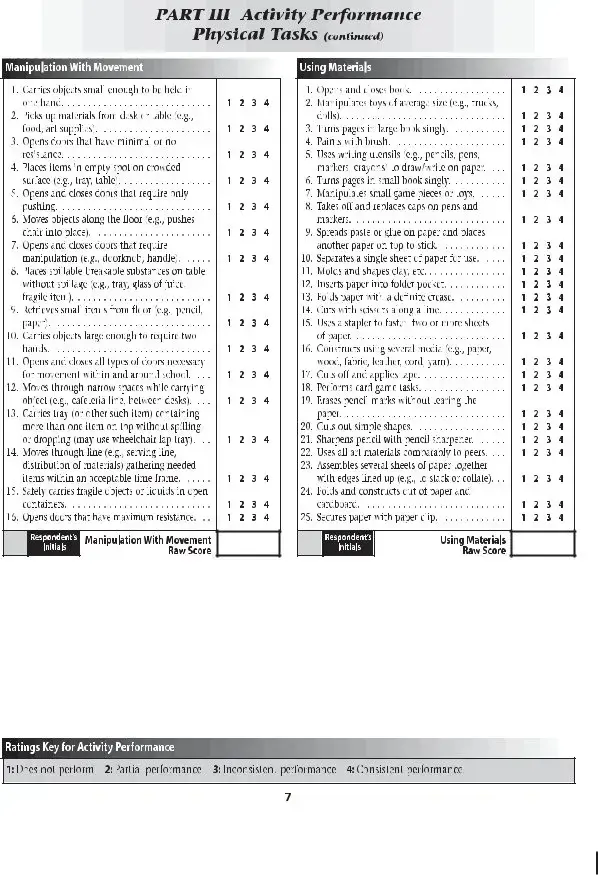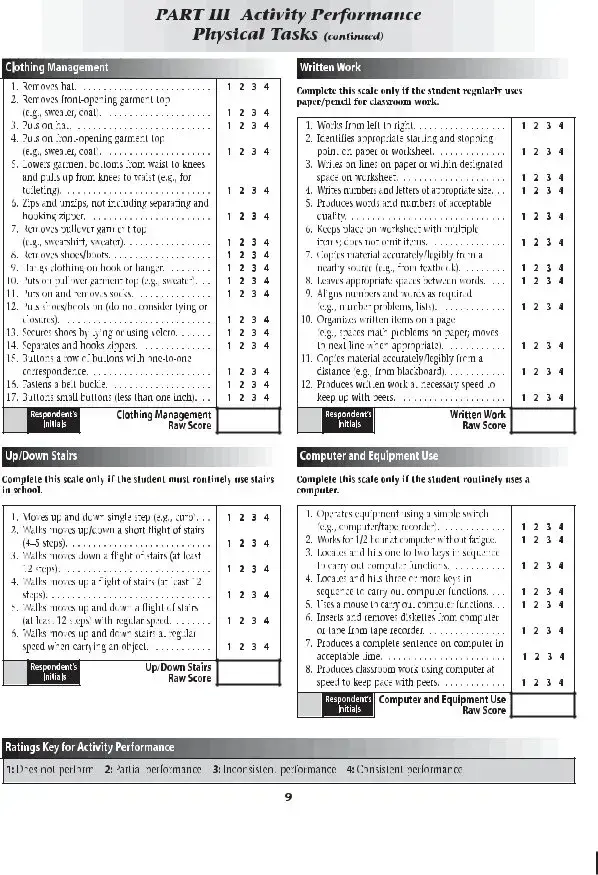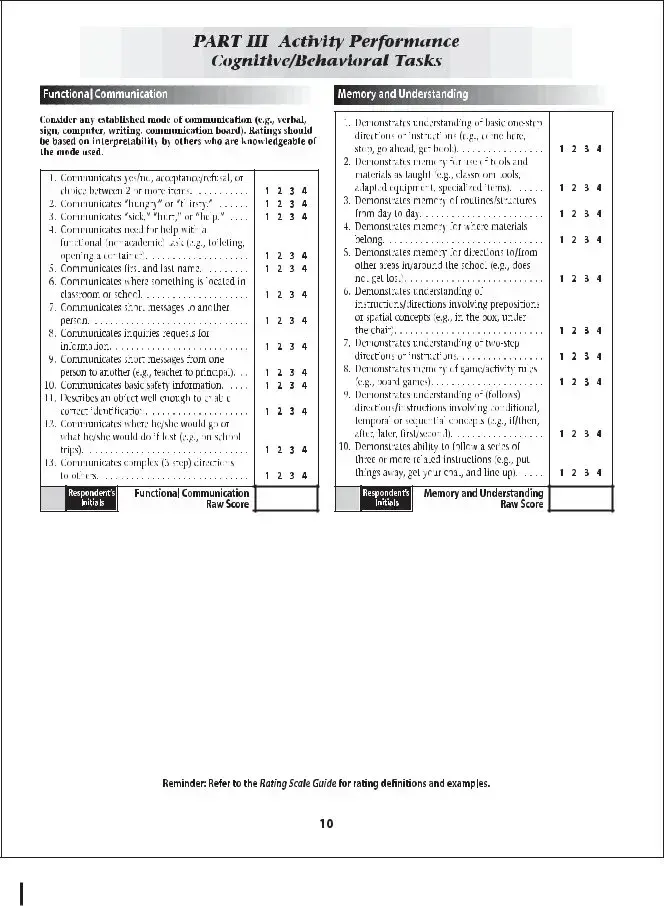School Function Assessment Template
The School Function Assessment form is a tool designed to evaluate a student's performance in various school-related activities. This assessment helps educators and parents understand how well a child can participate in daily school functions and identify areas that may need support. By focusing on the child's abilities and challenges, the form aids in creating effective educational strategies tailored to individual needs.
Launch School Function Assessment Editor
